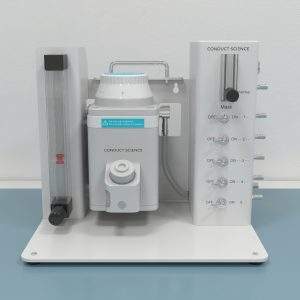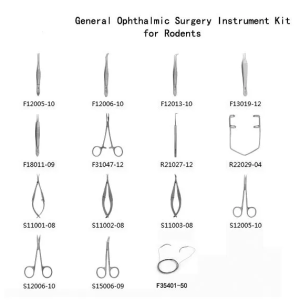$990.00
The Modified Y Choice apparatus is designed to evaluate bee vision and was employed by Horridge, A. (2000) to investigate orientation in honeybee vision.
Constructed with white card walls and a clear Perspex top, this apparatus ensures that unwanted recruits typically do not discover the circular entrance hole. Transparent Artistcare Drawfilm baffles are mounted within a cardboard frame.
In the study, pairs of black patterns on a white background were used, with one arm of the Y-maze offering a reward and the other not. These patterns were presented vertically. To prevent bees from using the location of black areas as cues, their positions were alternated every 5 minutes, while edge cues remained unchanged.
A choice is deemed successful if the bee passes through the correct baffle.
The Modified Y Choice apparatus is available from Mazeengineers.

MazeEngineers empowers preclinical neuroscience research with meticulously designed, customizable behavioral apparatuses. From manual classic mazes to fully automated smart systems, we provide the tools scientists need to capture high-quality, reproducible data for studies on learning, memory, anxiety, and depression.

bool(false)


bool(false)
Features |
Length of maze arms: 27cm |
Height of maze: 27cm |
Diameter of circular entrance hole: 5cm |
Width of black annulus surrounding hole at the centre of baffle: 0.5 cm |
Thickness of baffles: 0.13mm |
Width of cardboard frame: 1cm |
Diameter of hole on targets: 2cm |

The Modified Y Choice for Bees is a dual-choice apparatus designed to evaluate bee vision. Bees utilize two visual processing systems: they either learn the location of a specific area within stationary patterns or rely on cues from the edges of these patterns (Horridge 2000a; Horridge 1999). This apparatus examines visual processing in bees by focusing on the orientation of pattern edges while controlling for location-based cues (Horridge 2000b).
Resembling a conventional Y maze, the Modified Y Choice for Bees features an entrance arm that splits into two target arms. Bees enter the maze through a small hole in the entrance arm and then choose between the positive target arm, which contains a food reward, and the negative target arm by observing the black and white patterns on the walls of the target arms. The maze is designed so that bees can select the positive target arm by discriminating solely based on the orientation of the pattern edges. This task is straightforward and quick, making it an efficient method for assessing vision-based learning in honeybees.
Other apparatuses used to study various behaviors in bees include the Honeybee Y Maze, the Bumblebee Y Maze, and the Bee Radial Maze.
The Modified Y Choice for Bees measures 27 cm in height and 25 cm in length. It features a single entrance arm with a 5 cm diameter circular entrance hole, leading into two target arms to form a Y-shaped structure. The walls of the maze are constructed from white cardboard, while the roof is made of acrylic.
Between the entrance arm and the target arms, there are transparent baffles, each 0.13 mm thick, with a central hole of 5 cm in diameter encircled by a 0.5 cm wide black annulus. These baffles are mounted within a 1 cm wide cardboard frame. The target arm walls facing the transparent baffles each have a 2 cm diameter target hole. The hole in the positive target wall grants access to a reward, whereas the hole in the negative target wall leads to a blind tube.
The maze includes various pairs of patterned cardboards (mirror images) that are affixed to the target walls and can be easily rotated. Additionally, both the positive and negative target arms are equipped with air pipes to remove residual olfactory cues.
Ensure the maze is thoroughly cleaned before and after each task to eliminate any residual olfactory cues. Position the Modified Y Choice for Bees within 100 meters of the beehive, allowing the bees to return for another reward after approximately 5 minutes. To record and monitor the movements of the bees, use a tracking device like the Noldus EthoVision.
Set up the maze by placing a pair of patterned cardboard on both the positive and negative target walls. Begin the training by allowing bees to enter the maze through the entrance hole and choose between the positive and negative target holes by observing the patterns through the transparent baffles. Every 5 minutes, switch the position of the positive patterned cardboard to prevent the bees from learning which target hole to select based on location. Train the bees on one pair of patterns for 10 minutes, then switch to another pair of patterns for the next 10 minutes. Continue this training process for about 2 hours. Conduct the training in blocks, with each block consisting of 20 choices.
For the Modified Y Choice for Bees task, utilize patterns that differ from those used in pretraining. Allow the bees to enter the maze through the entrance hole and choose between the positive and negative target holes by viewing the patterns through the transparent baffles. Initially, offer the reward at the negative pattern, and then switch it to the positive pattern. Perform the tasks for approximately 3 to 4 hours. Conduct the task in blocks, with each block consisting of 20 choices.
Horridge (2000) investigated the patterned vision of Apis mellifera (honeybee) using an oriented edge as a visual cue. The study subjects included five groups of bees; each group is tagged with five different colors. The subjects were housed in a hive, and their vision was tested using the Modified Y Maze for Bees. The subjects were first trained to choose the target arm with a hole provided with a food reward. Different pairs of targets having black patterns against a white background were vertically placed in the target wall. The sides of the black patterns were oriented every 5 minutes while keeping the edges consistent. The subjects were then tested to see if the subjects were able to find the reward. The results of the study revealed the summation of orientation over the pattern when an array of rectangles and right-angled bars were used as a pattern. The cues situated in the short length of the edge were detected and summed on each fixation side irrespective of the layout of the pattern. The results of the edge polarity revealed that the patterns with saw tooth gratings weakly discriminated against the polarity of the edges. However, they discriminated against the orientation of the faulty line at the point where two gratings join. The subjects were able to discriminate the edge quality. However, they were not able to discriminate against them in unfamiliar orientations. It was observed that with the exclusion of spot location in the target patterns with rows of squares and spots, subjects were not able to discriminate as their net orientation is canceled. The study concluded that changing the location of the black patterns results in a summation of the local orientation cues. However, there is no rearrangement of a pattern on the changed edge orientation of the cue in Apis mellifera.
There are no questions yet. Be the first to ask a question about this product.